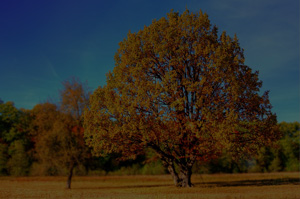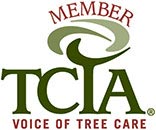Did you know that strategically planting trees and shrubs on your property can save you up to 25 percent in energy bills by reducing air conditioning and fuel costs year-round?
Correctly positioning a windbreak saves your home from the cold in the winter months and provides much-needed shade in the hot summers. Knowing the proper distance trees should be planted from your home, not to mention how tall and what species they should be will also reduce costs.
Whether you are landscaping your existing property or a new one, read some of these pointers so that you can save money while also helping the environment!
For the Heat
Shade the east and west sides of your home
The sun’s heat mainly penetrates on the east and west sides of a home, following the sun’s morning and afternoon path. Planting trees to shade the east and west sides of your home can save you on air conditioning bills by 25 percent. The west side is the highest priority since the sun is most intense in the afternoon hours. By reducing air conditioning usage, you’re also reducing air pollution.
As for what to plant, deciduous trees, such as American elms or sugar maples, or conifer, such as pine, are recommended. Make sure to plant about 20 feet away from your home. A general rule is to plant your windbreak at a distance from your home of two to five times the mature height of the trees.
Choosing deciduous trees that can grow at least 10 feet tall can block the sun’s rays by 60 to 90 percent.
Put your AC unit in a cool place
An air conditioner runs more efficiently if placed in a cooler environment. Trees can help cool your AC unit when they are planted near paved areas, such as driveways and patios. For good airflow and access, plants should be more than three feet away from the air conditioner.
For the Cold
Windbreak
Since homeowners in the Midwest typically spend 10 times more to heat rather than cool their homes, it’s important to know where to plant trees to serve as a barrier from chilly winds. Heating costs are heavily affected by cold winds that leak into the home and warm air that escapes. Failing to create a windbreak outside the home could increase your heating bill by 25 to 40 percent.
Some of the coldest winds come from the northwest, causing that corner of the home to lose the most heat.
You can plant trees, bushes, and shrubs to block some of the wind from the ground level to the treetops. Better yet, try planting a row of evergreen trees combined with a wall, fence or earth berm to deflect and lift the wind over your home.
A traditional windbreak begins with one or two rows of shrubs, then one to three rows of deciduous trees, ending with one to two rows of conifer trees about 50 to 200 feet from the house. Conifers are usually spruce and they are dense and low to the ground.
Landscape professionals can help you design your windbreak.
Shrub insulation
Seek out the vacant spaces along the perimeter of your home and replace them with shrubs, bushes, and vines to insulate in both winter and summer. Plant so there will be at least one foot of space between full-grown plants and your home's wall.
Things to Know
Planting rules of thumb
Shrubs and trees should be four to six feet away from each other with 10 to 12 feet between rows. Deciduous and conifer trees should be planted 15 to 20 feet away from each other with 20 to 30 feet between rows.
An arborist can help you choose the proper trees for your yard.
South is warmest
In cold winter months, the south side of your home is the best source of warmth. The angle of the sun is low to the south during this time, so having a few trees and shrubs on this side is desirable.
Solar energy collected from the south side of the home can heat as much as 5-20 percent of the energy needed in the wintertime. Twigs and branches of deciduous trees can block up to 50 percent of the sun’s heat, so make sure to keep this tree species away from the south side. To avoid shading south windows, trees on the south of the home should be at least twice their mature height away from the house.
Sources:
http://www.extension.umn.edu/environment/agroforestry/docs/energy-saving-landscapes.pdf
https://www.firstenergycorp.com/content/customer/help/saving_energy/trees.html











